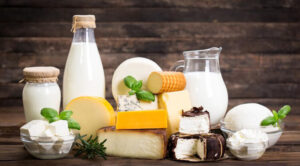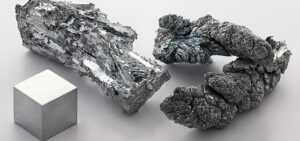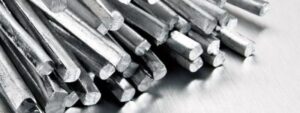
An outbreak of foot-and-mouth disease has been reported in Hungary, which has led to emergency measures in a number of countries. The authorities of the UK, Russia and Ukraine have already announced restrictions on imports of animals and animal products from Hungary to prevent the spread of the dangerous virus.
Today, Ukraine has imposed a ban on the import of animals susceptible to the foot-and-mouth disease virus, as well as raw materials and animal products from such animals. The State Service of Ukraine for Food Safety and Consumer Protection (SSUFSCP) explained that the measures were taken to avoid the introduction of the virus into the country. According to the agency, the source of infection can be not only infected animals, but also those in the incubation period. In addition, the virus is transmitted through products obtained from infected animals.
The competent authorities in each country continue to monitor the epizootic situation and are ready to introduce additional measures if necessary.
Foot-and-mouth disease is a highly contagious viral disease that affects farm animals such as cattle, pigs, sheep and goats. It is characterized by the appearance of ulcers and blisters in the mouth, hooves and udders of animals, accompanied by fever and a sharp decline in productivity.
The disease is spread by airborne droplets, through feed, water, clothing and equipment, and can also be transmitted through animal products. Although foot-and-mouth disease is rarely transmitted to humans, it causes significant damage to agriculture, leading to massive livestock losses, strict quarantine measures, and serious economic losses. Due to the high contagiousness of the disease, international veterinary services closely monitor outbreaks and take strict measures to prevent its spread.

In February 2025, Ukraine increased the total volume of foreign trade in dairy products to $45.6 million, which is 8.5% more than in January 2025 ($42.0 million), but 16.4% lower than in December 2024 ($54.5 million), the Union of Dairy Enterprises of Ukraine reported.
According to the report, dairy exports in February 2025 amounted to $24.2 million and increased by 25% compared to January 2025 ($19.3 million) and by 51% compared to December 2024 ($16.0 million). The growth occurred in all commodity items, especially in milk and condensed cream (+0.91 thousand tons) and butter and milk fats (+0.25 thousand tons).
At the same time, 36% of the export structure was accounted for by milk and condensed cream, 30% by butter, and 20% by cheese.
Experts emphasized that such significant export volumes have not been recorded since October 2022.
Instead, import volumes continued to decline and became the lowest in the last six months: in February 2025, they amounted to $21.4 million and decreased by 6% compared to January 2025 ($22.7 million) and by 44% compared to December 2024 ($38.5 million). Moreover, the volume of cheese imports was standard, while the volume of fermented dairy products imports decreased by 14.5% compared to January.
The export-import balance in February 2025 was positive: ($2.8 million) – against $(-3.4) million in January 2025 and $(-22.6) million in December 2024.
Exports in value terms exceeded imports by 13% in February 2025 (0.85 times in January 2025, 0.41 times in December 2024).

The Canadian Food Inspection Agency (CFIA) has approved a program to import fresh apples from Ukraine, the press service of the State Service of Ukraine for Food Safety and Consumer Protection reported.
“In the face of full-scale Russian aggression, we pay special attention to supporting Ukraine’s economy and Ukrainian exporters. A strong economy and resilient businesses play a critical role in the overall defense capability of our country. That is why we, together with the State Service of Ukraine for Food Safety and Consumer Protection, continue to create new opportunities for Ukrainian producers, liberalize trade, and open doors to new foreign markets,” said Andriy Sybiga, Minister of Foreign Affairs of Ukraine.
“The demand for Ukrainian products is growing every year in the international trade arena. Today, Canada is opening its market for our apples. The State Service of Ukraine for Food Safety and Consumer Protection, together with the Ministry of Foreign Affairs, processes every request from businesses to open new markets. Not only some countries are considered, but the entire world map: America, the European Union, Africa, and East Asia,” emphasized Serhiy Tkachuk, Head of the State Service of Ukraine on Food Safety and Consumer Protection.
Canada has already updated its import requirements for Ukraine in its Automated Import Reference System (AIRS) and approved the Export Program for Ukrainian apples (Malus domestica).
According to the agreement, apples can be supplied to Canada by producers who grow them, have packaging and export campaigns, and are included in the List of Exporters, Producers and Packers of Ukrainian Apples to Canada.
Their orchards are monitored by the State Service of Ukraine on Food Safety and Consumer Protection to predict the spread of pests and provide recommendations for pest control. Pest control measures should ensure that registered operators maintain a low prevalence of pests or the absence of pests regulated in Canada. Businesses must use sorting equipment to remove ticks, insects, other pests and dirt, etc.
Each shipment requires a phytosanitary certificate from the State Service of Ukraine on Food Safety and Consumer Protection.

Imports of transformers, inductors and chokes to Ukraine in January 2025 increased almost sixfold compared to the same month in 2024 to $127.9 million, according to statistics from the State Customs Service (SCS).
According to the statistics, in January this year, these products were mainly imported from China – for $116.07 million (90.75% of total imports of these goods), while a year earlier, transformers and chokes were imported from this country for $12.9 million (59.7%). That is, their imports increased almost ninefold last month.
They were also imported from Turkey (by $4.5 million) and the United States (by $1.75 million).
In January 2024, the Czech Republic ($1.9 million) and Italy (almost $1 million) were among the largest importing countries, in addition to China.
At the same time, Ukraine exported transformers, inductors, and chokes worth $2.05 million in January 2025, compared to $1.24 million in January 2024, mainly to Hungary, Germany, and Azerbaijan.
According to the State Customs Service, imports of transformers, inductors and chokes to Ukraine more than doubled in 2024 compared to 2023, to $596.11 million, while China imported 2.5 times more of them, by $400.48 million.

In January 2025, Ukraine reduced imports of zinc and zinc products by 34.2% compared to the same period in 2024 to $2,695 million. In December 2024, imports amounted to $3,802 million. Zinc exports in January amounted to $137 thousand (in December – $100 thousand), while in January 2024 it was at the level of $8 thousand.
Pure zinc metal is used to reduce precious metals, protect steel from corrosion and for other purposes.

In January 2025, imports of tin and tin products decreased by 11.5% compared to January 2024, to $230 thousand. In December 2024, this figure was $338 thousand.
Tin is used mainly as a safe, non-toxic, corrosion-resistant coating in its pure form or in alloys with other metals. The main industrial applications of tin are in white tinplate (tinned iron) for food containers, in solders for electronics, in house pipelines, in bearing alloys, and in coatings made of tin and its alloys. The most important tin alloy is bronze (with copper).